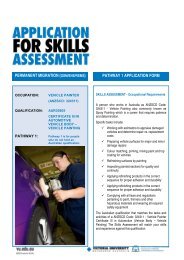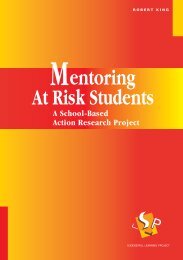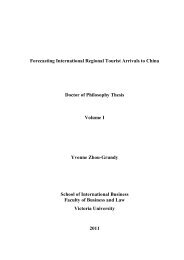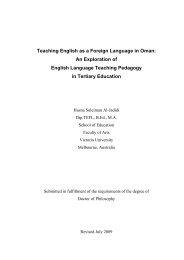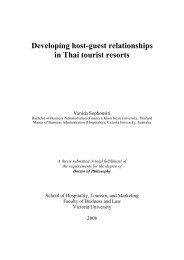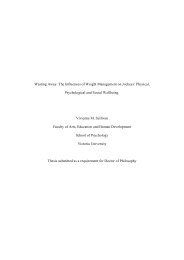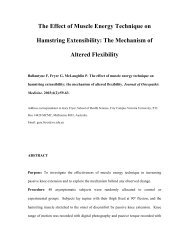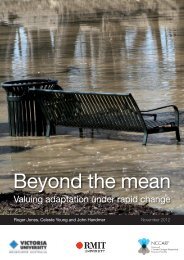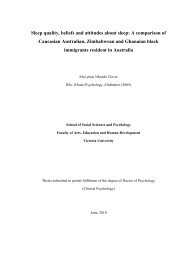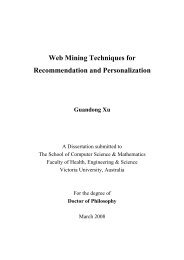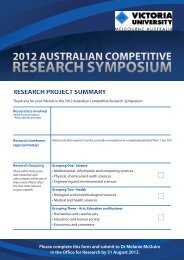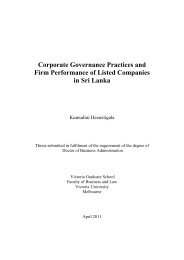Providing Education and Training for At Risk ... - Victoria University
Providing Education and Training for At Risk ... - Victoria University
Providing Education and Training for At Risk ... - Victoria University
- No tags were found...
Create successful ePaper yourself
Turn your PDF publications into a flip-book with our unique Google optimized e-Paper software.
MethodologyConduct of the project has involved the following phases:Phase One: Getting startedThis phase consisted of three parts.(i) The first part involved a preliminary review of literature to in<strong>for</strong>m the development of theinterview pro<strong>for</strong>ma to be used in the initial selection of programs <strong>for</strong> the survey. Thisinitial review involved accessing a range of government <strong>and</strong> non-government documents,articles, reports, <strong>and</strong> videos both research-based <strong>and</strong> policy-based; <strong>and</strong> identifying relevantdocuments through searches on the Internet, online databases (ERIC, Family, Australian<strong>Education</strong> Index), including publication lists of relevant organisations <strong>and</strong> personalcontacts.The questions <strong>for</strong>mulated as a consequence of this review, <strong>and</strong> used <strong>for</strong> the Stage 1 interviewswere:• Name <strong>and</strong> location of the program?• How do participants join/select the program?• What activities are taking place? (<strong>and</strong> how are these established as worthwhile?)• Who works as leadership in the program? (<strong>and</strong> on what basis: qualified? paid? etc)• How does the program relate to other programs? (homelessness, unemployment, substanceabuse, health, schooling etc)• What makes this program st<strong>and</strong>out/successful, <strong>and</strong> where does it lead?(ii)The second part of this phase involved pursuing the numerous leads regarding potentialprograms <strong>and</strong> resources identified by members of the research team through their individualnetworks <strong>and</strong> through searches of various in<strong>for</strong>mation databases including the WorldWide Web. An initial contact was generally made to determine whether the program/activity was appropriate <strong>for</strong> the project, <strong>and</strong> if so, whether the program leader was preparedto discuss it with a member of the research team. Arrangements were then made <strong>for</strong> aninterview which was usually conducted by telephone.The principles <strong>and</strong> practices underpinning the following activities were a major focus <strong>for</strong>further exploration:• curriculum interventions in schools;• school interventions that focussed on school policy <strong>and</strong> linked to broader communityyouth services;• regional approaches to youth education, training <strong>and</strong> employment;• community based programs <strong>and</strong> services that provided links <strong>and</strong> pathways to education<strong>and</strong> training <strong>for</strong> young people; <strong>and</strong>• vocational programs <strong>and</strong> associated specialist services e.g. literacy, numeracy <strong>and</strong>employment preparation in the post school sector.(iii) The third aspect involved the structuring of a database <strong>for</strong> this in<strong>for</strong>mation. This took the<strong>for</strong>m of a running sheet on which in<strong>for</strong>mation gathered from the initial interviews wasrecorded.13



